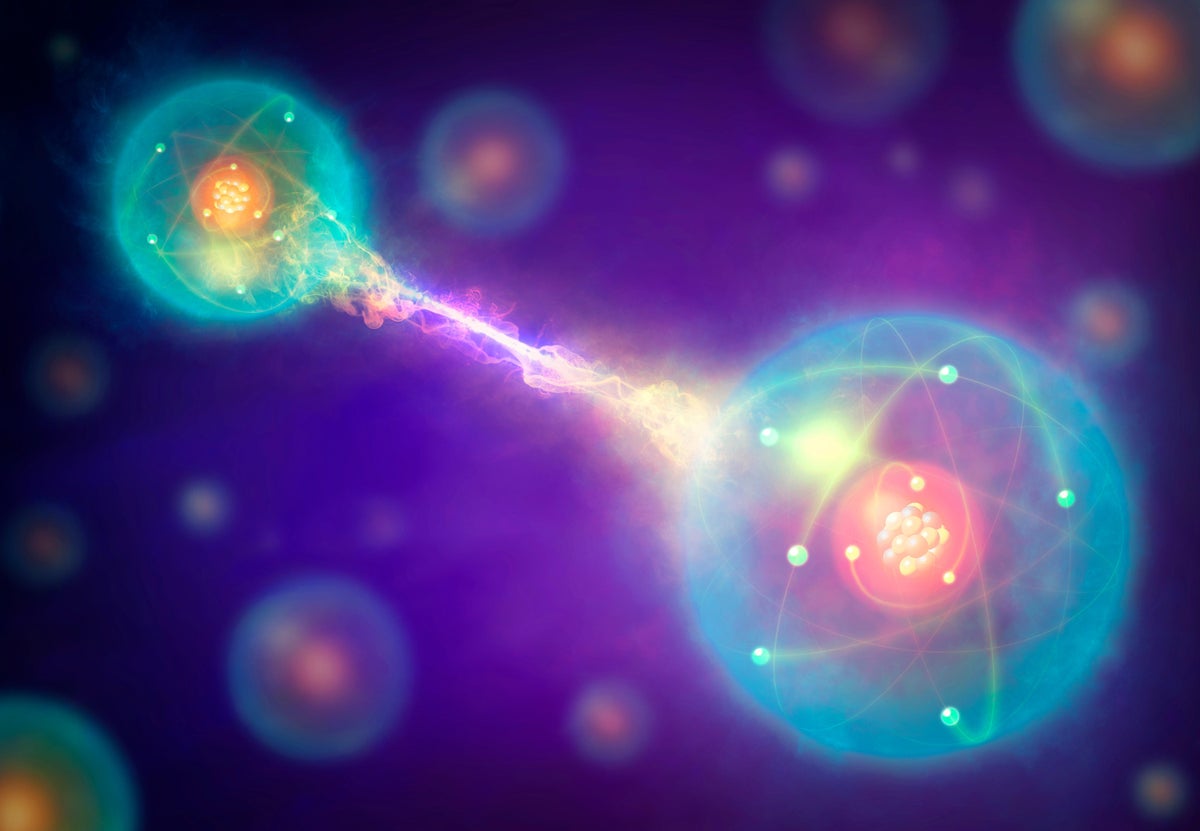This is how we could travel faster than light!
Faster-than-light (FTL) travel has long been a staple of science fiction, capturing the imagination of enthusiasts and scientists alike. While currently confined to the realm of fantasy, the prospect of breaking the cosmic speed limit continues to be a subject of fascination and speculation. In this article, we delve into the concept of FTL travel, its theoretical foundations, and the potential avenues that could one day lead humanity to traverse the vast expanses of space at speeds unimaginable.
Theoretical Framework
The speed of light, approximately 299,792 kilometers per second, serves as an unyielding barrier in traditional physics. However, several theoretical frameworks have been proposed to circumvent this limit. One prominent idea is the concept of wormholes – hypothetical shortcuts through spacetime that could create bridges between distant points. While intriguing, the realization of stable and traversable wormholes remains purely speculative, as their existence is yet to be confirmed.
Alcubierre Drive
The Alcubierre Drive, proposed by theoretical physicist Miguel Alcubierre in 1994, is a speculative concept that captivates the realm of theoretical physics and space exploration. Often referred to as a "warp drive," the Alcubierre Drive is conceived as a means of achieving faster-than-light travel without violating the principles of relativity. The concept involves contracting space in front of a spacecraft while simultaneously expanding it behind, creating a "warp bubble" within which the spacecraft resides. This manipulation of spacetime allows the spacecraft to move within the bubble, effectively riding a wave of distorted spacetime rather than moving through it. While the Alcubierre Drive appears to circumvent the cosmic speed limit imposed by the speed of light, its feasibility faces substantial challenges. The drive requires the existence of exotic matter with negative energy density, a substance with properties not yet observed and whose existence remains purely theoretical. Additionally, the potential impact of accumulating Hawking radiation and the instability of the warp bubble raise questions about the drive's practicality. Despite these challenges, the Alcubierre Drive concept has sparked discussions within the scientific community about the possibilities and limitations of achieving interstellar travel, pushing the boundaries of our understanding of spacetime and the prospects for traversing vast cosmic distances.
Quantum Entanglement
Quantum entanglement is an enthralling phenomenon that lies at the heart of quantum mechanics, challenging classical intuitions about the nature of reality. It occurs when two or more particles become intrinsically correlated, sharing a quantum state in such a way that the properties of one particle instantaneously influence the properties of its entangled partner, regardless of the spatial separation between them. This non-local correlation, famously referred to by Einstein as "spooky action at a distance," defies the classical notion of locality and suggests an interconnectedness that transcends conventional understandings of space and time. The entangled particles, often photons or electrons, exhibit a correlated state, such that measuring a property of one particle instantaneously determines the corresponding property of the other, even if they are light-years apart.
The concept of quantum entanglement was famously highlighted in the EPR paradox (Einstein-Podolsky-Rosen paradox), which challenged the completeness of quantum mechanics. The phenomenon has been experimentally verified through numerous groundbreaking studies, including the famous Bell's theorem experiments, confirming the non-classical correlations predicted by quantum theory. Quantum entanglement plays a pivotal role in emerging technologies such as quantum computing and quantum communication, where the manipulation and exploitation of entangled states enable the development of novel information processing paradigms.
The profound implications of quantum entanglement extend into the fundamental nature of reality, challenging our intuitions and demanding a deeper understanding of the quantum realm. While quantum entanglement remains a central and well-established concept in quantum physics, its mysterious and counterintuitive nature continues to fuel scientific exploration, pushing the boundaries of our comprehension of the quantum universe.
Ethical and Practical Considerations
Beyond the scientific challenges, FTL travel raises ethical and practical questions. The impact on space-time, the potential consequences of altering the fabric of the cosmos, and the environmental effects of such travel are crucial considerations. Additionally, the ethical ramifications of interstellar exploration, such as encountering extraterrestrial life, require careful contemplation.
Possibilities for Time Travel
While Faster-Than-Light travel remains firmly in the realm of speculation and theoretical physics, the pursuit of such innovations drives scientific curiosity and exploration. As technology advances and our understanding of the universe deepens, who's to say what the future holds? Whether through wormholes, warp drives, or unforeseen breakthroughs, the dream of exploring distant galaxies at warp speed continues to inspire the next generation of scientists and dreamers.




Comments
Post a Comment